Chemistry Valentine’s Cards by Nick Uhlig.
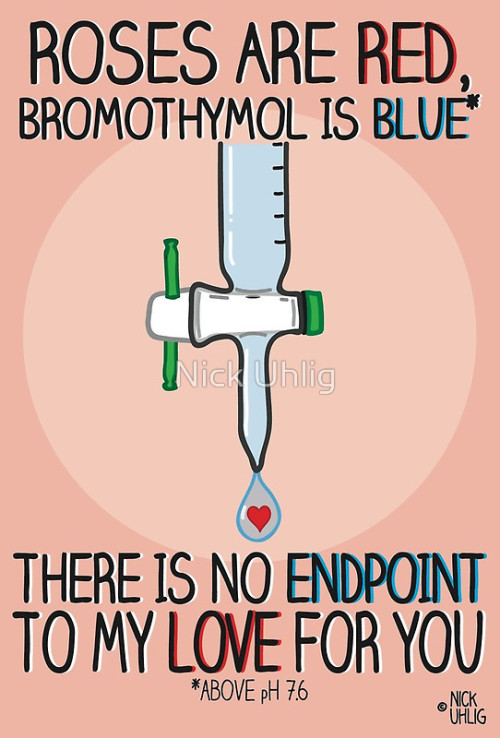
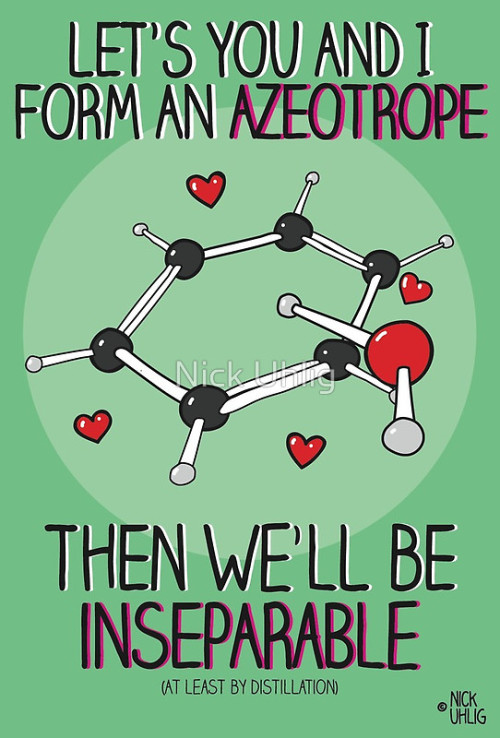

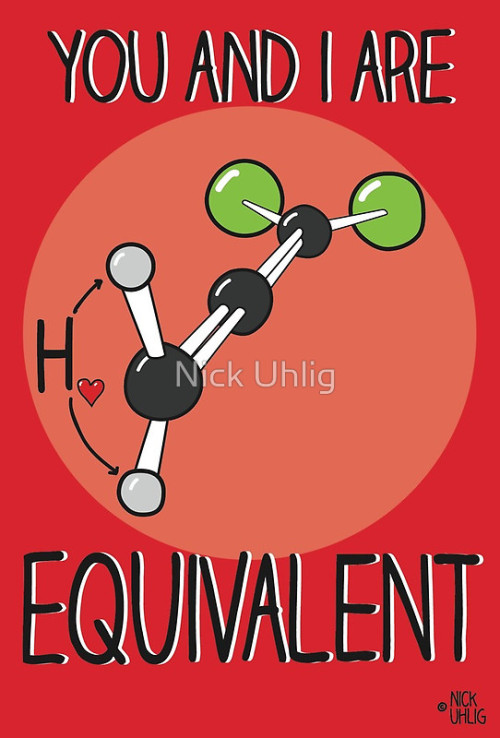



Chemistry Valentine’s Cards by Nick Uhlig.
More Posts from In-pursuit-of-knowledge-blog and Others

Cotton Rat Skull
My first rat skull, found it in Florida all dried up next to our condo. Judging by the fur color, fur texture, and S shaped molars I THINK its a hispid cotton rat. There were a few of these little guys running around and they didn’t look like normal rats to me. But idk, there’s really no way for me to tell for certain just by skull measurements. I’m not quite that good at bone identification yet.
The Hunt for New Worlds Continues with TESS
We’re getting ready to start our next mission to find new worlds! The Transiting Exoplanet Survey Satellite (TESS) will find thousands of planets beyond our solar system for us to study in more detail. It’s preparing to launch from our Kennedy Space Center at Cape Canaveral in Florida.

Once it launches, TESS will look for new planets that orbit bright stars relatively close to Earth. We’re expecting to find giant planets, like Jupiter, but we’re also predicting we’ll find Earth-sized planets. Most of those planets will be within 300 light-years of Earth, which will make follow-up studies easier for other observatories.

TESS will find these new exoplanets by looking for their transits. A transit is a temporary dip in a star’s brightness that happens with predictable timing when a planet crosses between us and the star. The information we get from transits can tell us about the size of the planet relative to the size of its star. We’ve found nearly 3,000 planets using the transit method, many with our Kepler space telescope. That’s over 75% of all the exoplanets we’ve found so far!

TESS will look at nearly the entire sky (about 85%) over two years. The mission divides the sky into 26 sectors. TESS will look at 13 of them in the southern sky during its first year before scanning the northern sky the year after.

What makes TESS different from the other planet-hunting missions that have come before it? The Kepler mission (yellow) looked continually at one small patch of sky, spotting dim stars and their planets that are between 300 and 3,000 light-years away. TESS (blue) will look at almost the whole sky in sections, finding bright stars and their planets that are between 30 and 300 light-years away.

TESS will also have a brand new kind of orbit (visualized below). Once it reaches its final trajectory, TESS will finish one pass around Earth every 13.7 days (blue), which is half the time it takes for the Moon (gray) to orbit. This position maximizes the amount of time TESS can stare at each sector, and the satellite will transmit its data back to us each time its orbit takes it closest to Earth (orange).

Kepler’s goal was to figure out how common Earth-size planets might be. TESS’s mission is to find exoplanets around bright, nearby stars so future missions, like our James Webb Space Telescope, and ground-based observatories can learn what they’re made of and potentially even study their atmospheres. TESS will provide a catalog of thousands of new subjects for us to learn about and explore.

The TESS mission is led by MIT and came together with the help of many different partners. Learn more about TESS and how it will further our knowledge of exoplanets, or check out some more awesome images and videos of the spacecraft. And stay tuned for more exciting TESS news as the spacecraft launches!
Watch the Launch + More!

Sunday, April 15 11 a.m. EDT - NASA Social Mission Overview
Join mission experts to learn more about TESS, how it will search for worlds beyond our solar system and what scientists hope to find! Have questions? Use #askNASA to have them answered live during the broadcast.
Watch HERE.
1 p.m. EDT - Prelaunch News Conference
Get an update on the spacecraft, the rocket and the liftoff operations ahead of the April 16 launch! Have questions? Use #askNASA to have them answered live during the broadcast.
Watch HERE.
3 p.m. EDT - Science News Conference
Hear from mission scientists and experts about the science behind the TESS mission. Have questions? Use #askNASA to have them answered live during the broadcast.
Watch HERE.
4 p.m. EDT - TESS Facebook Live
This live show will dive into the science behind the TESS spacecraft, explain how we search for planets outside our solar system and will allow you to ask your questions to members of the TESS team.
Watch HERE.
Monday, April 16 10 a.m. EDT - NASA EDGE: TESS Facebook Live
This half-hour live show will discuss the TESS spacecraft, the science of searching for planets outside our solar system, and the launch from Cape Canaveral.
Watch HERE.
1 p.m. EDT - Reddit AMA
Join us live on Reddit for a Science AMA to discuss the hunt for exoplanets and the upcoming launch of TESS!
Join in HERE.
6 p.m. EDT - Launch Coverage!
TESS is slated to launch at 6:32 p.m. EDT on a SpaceX Falcon 9 rocket from our Kennedy Space Center in Florida.
Watch HERE.
Make sure to follow us on Tumblr for your regular dose of space: http://nasa.tumblr.com

When you’re an umbrella jelly but you can never be dry 😓
But they never stop trying 💪
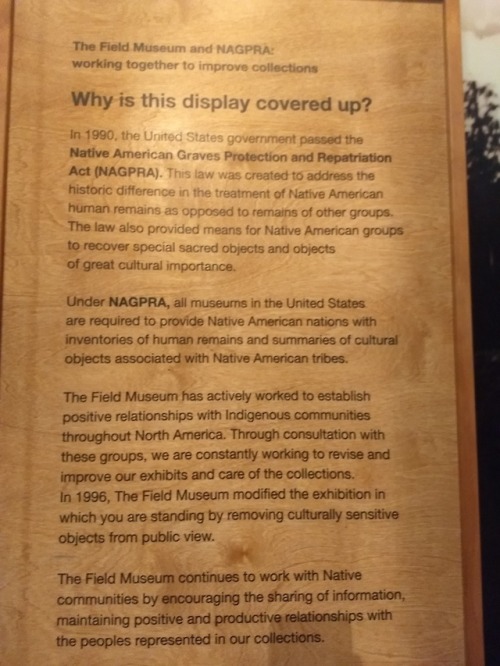
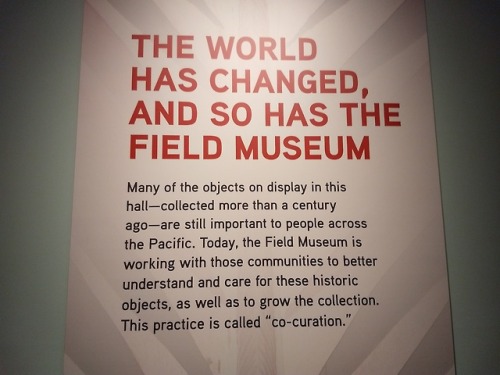
So I will admit I was feeling funny about going to the Field Museum because of the whole “look at display of objects from colonized groups” thing. Especially because of the Black Panther post with commentary on museums.
But boy, the Field Museum really does seem to be doing a fair amount towards rectifying past attitudes and actions. I took these two pictures and there were at least two others I wish I had remembered to take pictures of. I was thrilled to see such obvious mentions of this kind of thing instead of a lack of change or pretending it didn’t happen.
@kaijutegu I’ve been meaning to post these for the past few days, every time I see the BP museum post go by again!
Sometimes you have to lick the equipment for science. It’s just a little fluid ¯\_(ツ)_/¯

i was looking for info on when artificial sweeteners became popular and came across this. this idiot fuckn scientist just went and licked his entire lab. what a fuckign fool. wht the fuck
What we all need to understand about AI in a nutshell:
There’s an algorithm that can reliably predict, from aggregate facebook posts, the onset of a manic episode in a person suffering from bipolar disorder – more reliably even, than a trained psychotherapist, who only has access to the information a patient provides them in therapy sessions.
“Won’t technology like that help people with bipolar disorder?”
Theoretically, it could. But this algorithm wasn’t designed to help people with bipolar disorder.
This algorithm was designed to sell plane tickets to Las Vegas.
[source]

Nine relief printed original art greeting cards, each with a unique set of curios/specimens.
people say the animorphs covers are *creepy* but the actual in book transformations are all like ‘then her face cracked in two, her organs melted, her bones all snapped and reformed backwards, and her fingers and toes fused together. she couldnt cry because her tear ducts didnt fucking exist anymore. everyone looked at the ground so they wouldnt throw up looking at this’
Help Explore Your Own Solar Neighborhood
We’re always making amazing discoveries about the farthest reaches of our universe, but there’s also plenty of unexplored territory much closer to home.

Our “Backyard Worlds: Planet 9” is a citizen science project that asks curious people like you — yes, you there! — to help us spot objects in the area around our own solar system like brown dwarfs. You could even help us figure out if our solar system hosts a mysterious Planet 9!

In 2009, we launched the Wide-field Infrared Survey Explorer (WISE). Infrared radiation is a form of light that humans can’t see, but WISE could. It scans the sky for infrared light, looking for galaxies, stars and asteroids. Later on, scientists started using it to search for near-Earth objects (NEOWISE) like comets and asteroids.

These searches have already turned up so much data that researchers have trouble hunting through all of it. They can’t do it on their own. That’s why we asked everyone to chip in. If you join Backyard Worlds: Planet 9, you’ll learn how to look at noisy images of space and spot previously unidentified objects.
You’ll figure out how to tell the difference between real objects, like planets and stars, and artifacts. Artifacts are blurry blobs of light that got scattered around in WISE’s instruments while it was looking at the sky. These “optical ghosts” sometimes look like real objects.

Why can’t we use computers to do this, you ask? Well, computers are good at lots of things, like crunching numbers. But when it comes to recognizing when something’s a ghostly artifact and when it’s a real object, humans beat software all the time. After some practice, you’ll be able to recognize which objects are real and which aren’t just by watching them move!

One of the things our citizen scientists look for are brown dwarfs, which are balls of gas too big to be planets and too small to be stars. These objects are some of our nearest neighbors, and scientists think there’s probably a bunch of them floating around nearby, we just haven’t been able to find all of them yet.
But since Backyard Worlds launched on February 15, 2016, our volunteers have spotted 432 candidate brown dwarfs. We’ve been able to follow up 20 of these with ground-based telescopes so far, and 17 have turned out to be real!

Image Credit: Ryan Trainor, Franklin and Marshall College
How do we know for sure that we’ve spotted actual, bona fide, authentic brown dwarfs? Well, like with any discovery in science, we followed up with more observation. Our team gets time on ground-based observatories like the InfraRed Telescope Facility in Hawaii, the Magellan Telescope in Chile (pictured above) and the Apache Point Observatory in New Mexico and takes a closer look at our candidates. And sure enough, our participants found 17 brown dwarfs!

But we’re not done! There’s still lots of data to go through. In particular, we want your help looking for a potential addition to our solar system’s census: Planet 9. Some scientists think it’s circling somewhere out there past Pluto. No one has seen anything yet, but it could be you! Or drop by and contribute to our other citizen science projects like Disk Detective.
Congratulations to the citizen scientists who spotted these 17 brown dwarfs: Dan Caselden, Rosa Castro, Guillaume Colin, Sam Deen, Bob Fletcher, Sam Goodman, Les Hamlet, Khasan Mokaev, Jörg Schümann and Tamara Stajic.
Make sure to follow us on Tumblr for your regular dose of space: http://nasa.tumblr.com.
-
 sachinighte reblogged this · 3 months ago
sachinighte reblogged this · 3 months ago -
 mrgabrieljohnutterson reblogged this · 1 year ago
mrgabrieljohnutterson reblogged this · 1 year ago -
 i-dont-zinc-so reblogged this · 1 year ago
i-dont-zinc-so reblogged this · 1 year ago -
 sprite-and-tranxiety reblogged this · 1 year ago
sprite-and-tranxiety reblogged this · 1 year ago -
 sprite-and-tranxiety liked this · 1 year ago
sprite-and-tranxiety liked this · 1 year ago -
 grounorobin liked this · 1 year ago
grounorobin liked this · 1 year ago -
 c28hunter liked this · 2 years ago
c28hunter liked this · 2 years ago -
 atomicstarburstlabware reblogged this · 2 years ago
atomicstarburstlabware reblogged this · 2 years ago -
 mcnamak reblogged this · 2 years ago
mcnamak reblogged this · 2 years ago -
 sakebobomb liked this · 2 years ago
sakebobomb liked this · 2 years ago -
 jbry liked this · 2 years ago
jbry liked this · 2 years ago -
 kristiemewie liked this · 2 years ago
kristiemewie liked this · 2 years ago -
 incorrectanni liked this · 3 years ago
incorrectanni liked this · 3 years ago -
 tajgernewdemon liked this · 3 years ago
tajgernewdemon liked this · 3 years ago -
 mo-s-k14142 liked this · 3 years ago
mo-s-k14142 liked this · 3 years ago -
 dxyipxris liked this · 3 years ago
dxyipxris liked this · 3 years ago -
 aufeiner-reiseohneziel liked this · 3 years ago
aufeiner-reiseohneziel liked this · 3 years ago
Once I was made of stardust. Now I am made of flesh and I can experience our agreed-upon reality and said reality is exciting and beautiful and terrifying and full of interesting things to compile on a blog! / 27 / ENTP / they-them / Divination Wizard / B.E.y.O.N.D. department of Research and Development / scientist / science enthusiast / [fantasyd20 character]
162 posts
